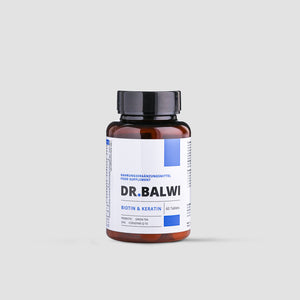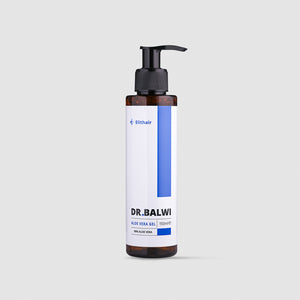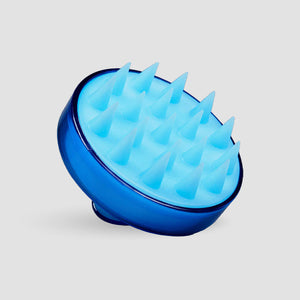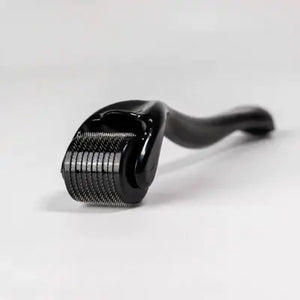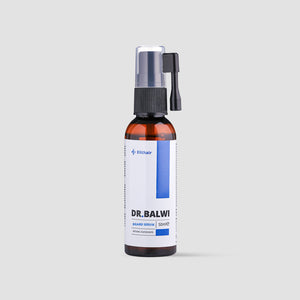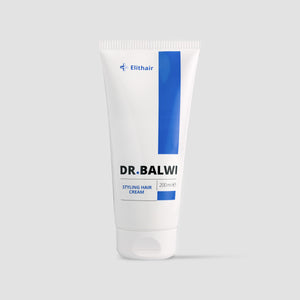
Treat trichonodosis correctly and in a timely manner
Trichonodosis refers to the entanglement of hair. If left untreated, it can lead to permanent damage to the scalp over time. In the worst case, the condition can result in permanent hair loss. Therefore, it is important to treat these so-called looped hairs promptly. In this article, you will learn about possible treatment options for this condition.
What are the characteristics of trichonodosis?
Trichonodosis is a condition in which tangles form in the hair. Most commonly, scalp and pubic hair are affected. The hair becomes matted, breaks off easily, and is then difficult to style. This can sometimes even lead to hair loss. Trichonodosis is often accompanied by trichorrhexis nodosa . The latter condition is characterized by splitting of the hair. It is often caused by overly aggressive dyes or by pulling the hair too hard with a comb or brush. Psychological stress and hormonal imbalance are also possible causes. Generally, people with long, thin hair are more likely to suffer from this problem. If you notice that your hair is increasingly tangled and matted, you should consult a specialist. It is also advisable to limit mechanical stress on the hair and scalp. This helps prevent permanent damage such as hair loss.
The most important facts at a glance:
- Trichonodosis is caused by external influences
- In the early stages the disease is easily treatable
- The condition is often accompanied by trichorrhexis nodosa
- People with thin, long hair are particularly at risk
How does suffering arise?

Trichonodosis is usually caused by external factors. These include, among others, pulling and scratching the hair. This behavior is often triggered by itchy skin on the head. However, the symptoms mentioned above can also occur on your head due to frequent and careless massage. Furthermore, the anomaly can be caused by prolonged exposure to strong winds. The positive thing is that looped hair can be easily treated by avoiding the aforementioned behaviors. The prerequisite for this is that you take the right measures in a timely manner. Therefore, if you experience these symptoms frequently on your head, you should act immediately.
Who is particularly at risk?
Those at risk include people with thin hair. This type of hair is usually characterized by a weaker structure, which makes it prone to matting. It also breaks easily under mechanical stress and is prone to kinking. With this type of hair, you need to use particularly gentle care products. It's also worth using a brush with soft bristles to prevent damage caused by excessive pulling. Cover your hair with a hat during intense weather, making sure it's not too tight. Also, maintain a balanced diet and get plenty of time to relax.
How the disease can be treated

If you notice that your hair is becoming increasingly tangled, you should see a dermatologist. This is especially true if the brittle hair is accompanied by itchy patches on the skin. A dermatologist will first examine the scalp and hair structure. They will also take a detailed medical history to determine the cause of the problem. If trichomoniasis is caused by a skin disease, the doctor will treat the latter first. Fungi, in particular, often cause those affected to scratch themselves. This then causes the hair to become tangled in the affected areas. With skin fungus, there is also a risk that it will penetrate into the deeper layers of the epidermis and damage the hair roots there. In the worst case, permanent hair loss will occur in the affected area. However, if you see a doctor in time, you can easily get the skin fungus under control.
Further tips for successful treatment
If you have looped hair, you should avoid head massages for a while. Rubbing your fingers against the scalp and hair can easily cause knots and tangles to form. This is especially important if your hair is thin and already damaged. Avoid head massages until the symptoms improve. If you frequently spend time in areas with strong winds, you should wear a hat. This will protect your hair from matting. You can also tie your hair back if it's long enough—just don't make it too tight, as this could put additional strain on your scalp.
How should one deal with hair loss?

In some cases, the problem can also lead to hair loss. This is especially true if you don't see a doctor in a timely manner. Hair falls out in the affected areas, resulting in numerous bald patches. Sometimes hair loss is reversible. To promote the regrowth of lost hair, you need to reduce external stressors and use gentle hair care products. However, if the problem has been present for too long, a hair transplant may be necessary. This involves removing donor hair from the back of your head and transplanting it to the bald areas. The prerequisite for this is that you still have enough hair on your head to fill the bald patches. Therefore, it's important to act promptly when undergoing a hair transplant. At the clinic , your doctor will also examine the affected areas carefully beforehand. They will also check whether you are suffering from a skin disease. For the treatment to be successful, you must not have any scalp disease – otherwise, the newly transplanted hair will be shed again.
Conclusion - treat the condition in time
Trichonodosis is easily treatable. The prerequisite for this is that you see a doctor promptly. They will first take a detailed medical history and examine the condition of your hair and scalp. This will enable them to make an accurate diagnosis. In most cases, looped hair is caused by external influences such as frequent pulling or prolonged exposure to strong winds. If you avoid these behaviors and care for your hair gently, it will recover from the stress. You are especially at risk if your hair is thin and long. This is because this hair structure is prone to tangling and damage. In the worst case, the stress can result in permanent hair loss. Therefore, it is important to intervene promptly.

